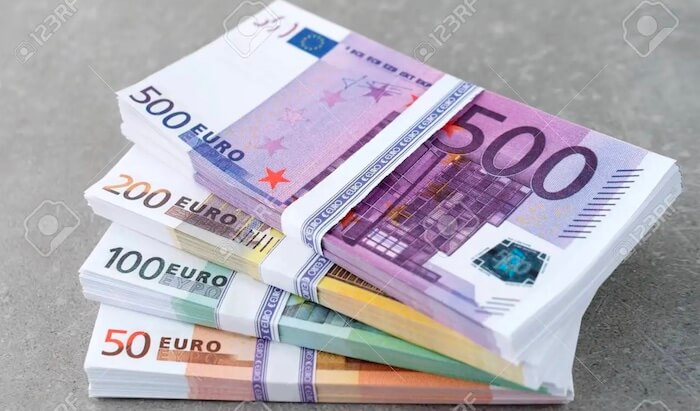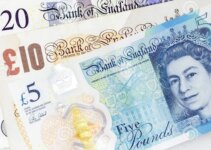The European Euro is one of the world’s strongest currencies. As a Nigerian, having a bunch of Euro notes is an aura of luxury because of the current rate of the Euro.
However, even though the black market rate is higher than the CBN rate, the black market is a staple for buying Euro notes in Nigeria.

So what’s the black market rate of Euro-Naira pairs in Nigeria? Being well-informed about the current exchange rates can help you negotiate well and always be a step ahead when you want to buy products.
Read along as we provide this pair’s current black market rate in Nigeria.
Euro To Naira Black Market Rate Today (April 24, 2024)
- €1 = ₦805 (selling)
- €1 = ₦790 (buying)
Like in the case of the United States dollar, the Naira is currently struggling and having a free fall against the Euro in the forex market.
The present exchange rates show that the Naira is performing poorly despite various interventions from the central bank of Nigeria to increase the value of the Naira. It may continue to decline.
However, the rate you buy or sell may differ and exceed this range because prices vary. There’s a chance naira might appreciate anytime because the price of the Euro continues to fluctuate.
It’s also worth stating that CBN doesn’t recognize the black market rates, as this body has continued to inform individuals who patronize forex to consult their respective banks.
- Dollar To Naira Black Market Rates Today
- Pounds To Naira Black Market Rates Today
- Euro To Naira Black Market Rates Today
Euro To Naira Exchange Rate History
It helps to understand the history of the Nigeria Naira and how it compares to other foreign currencies. For instance, knowing the history of the Euro-Naira pair, you can get a good idea about the improvement and decline of the Nigerian economy and the Naira.
Note that the pair exchange rate is the CBN rate and differs from the exchange rate, which is way higher because of the black market operator’s aim of making a profit.
Below is the average exchange rate for the Euro-Naira pair in the year 2022:
- January 2022 = 468.61
- February 2022 = 471.971
- March 2022 = 457.99
- April 2022 = 449.68
- May 2022 = 439.09
- June 2022 = 439.68
- July 2022 = 427.56
- August 2022 = 426.06
- September 2022 = 424.46
- October 2022 = 428.26
- November 2022 = 451.55
- December 2022 = 471.92
Source: exchangerates.org.uk
Year # Per Euro
2010 160.34
2011 217.05
2012 204.18
2013 211.57
2014 219.13
2015 219.56
2016 284.64
2017 378.16
2018 426.29
2019 403.20
2020 434.38
2021 477.27
2022 446.24
A brief History Of The Euro
Euro is the currency and monetary unit of the European Union(EU). The origin can be traced to the Maastricht Treaty of 1991, an agreement between the then 12 EU member countries now known as the European Union. The countries include the UK, Germany, France, Italy, Belgium, Spain, Ireland, Portugal, Netherlands, Denmark, Greece, and Luxembourg. The treaty called for a single unit of exchange (the Euro). It involved the establishment of an economic and monetary Union(EMU).
The currency was established as a non-cash monetary unit in 1999. It was designed to simplify life by allowing people to transact with the same money for domestic and international travel and business.
The EU’s economy and financial system are also meant to be protected from foreign exchange shocks by the Euro’s international solid role, which also aims to lessen dependence on other currencies and guarantee cost reduction for EU businesses.
At first, it was only an invincible currency and was only employed for accounting purposes. It was not until 2002 before the currency notes and coins were introduced in the participating countries.
Euro later became the sole currency of the 12 EU member states the same year, and these countries’ currencies stopped being used as legal tender. Over the years, eight more countries, including Estonia, Latvia, Malta, Slovakia, Slovenia, Cyprus, Greece, and Lithuania, subsequently adopted the currency.
Why is Euro So Strong?
The Euro is the official currency of 19 European countries and the second most crucial currency globally, even though it’s the youngest. It’s also the second most used currency in the world, both in circulation and reserve.
On the foreign exchange market, it is also acknowledged to be the second most traded currency, only after the US dollar. The EUR/USD pair, also known as “Fiber,” accounts for nearly a quarter of all daily forex trades, making it the most popular forex pair globally.
The Euro is not pegged to any other currency, and more than 25 countries peg their national currencies to the European Union. The Euro is strong because of its influential role in international trade. Besides, it represents the currencies of some of the most powerful economies in the world. As such, it’s highly sought after, increasing its value.

